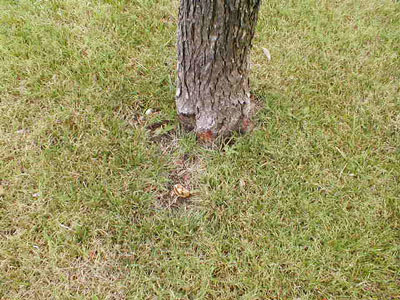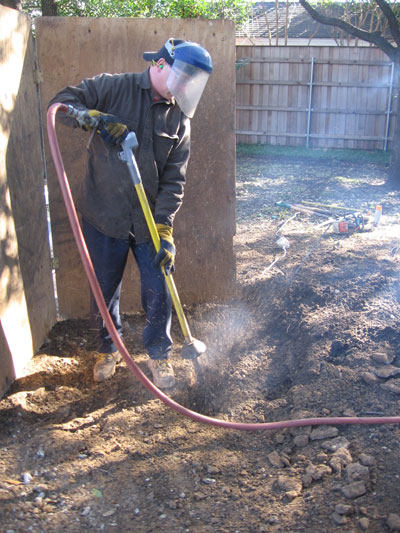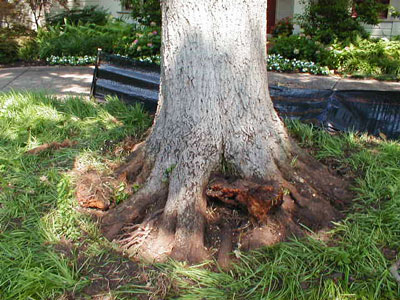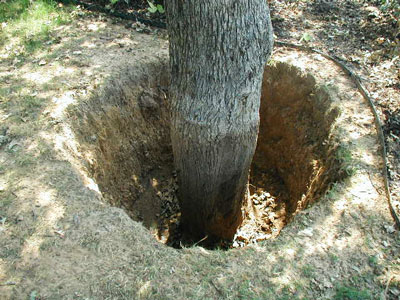Texas Tree Tips: June 2015

A tree with no root flare showing is cause for concern. Photos courtesy of Arborilogical Services.
by Steve Houser
Don`t Dump on Your Trunk
Root Flare – The root flare (or root collar) is the area at the base of a tree where the trunk transitions from trunk and bark tissues into root system tissues. Roots should be growing outward from the base of a tree at the same level as the surrounding soil or slightly above it. This creates a “flare” of roots that should always be exposed and never covered with soil or other materials. If the base of your tree looks like a telephone pole in the ground … you may have a problem.

A high-pressure air tool can be used to safely remove excess soil from roots or a trunk.
Excess soil or other materials around a root flare or trunk should be removed either by hand or with a pneumatic air tool. An air tool uses high-pressure air to blow away soil from the roots or trunk without inflicting any damage. Removing soil or materials by hand requires great care as roots and trunks are easily damaged by the slip of a shovel.

Exposed root collar and fruiting body from a pathogen (Ganoderma lucidins).
Trunk – The above-ground portions of the trunk and root flare may not function normally when they are placed in an underground condition for any length of time. The bark of a tree is designed to protect the inner tissues against natural forces, but it will not do well when the bark tissues cannot dry out. The lack of air and dry tissue over time can lead to a loss of bark tissue … not a good thing. Adding materials such as soil, brick, mulch, or rock that contact the trunk can encourage rot and decay, as well as increase the potential for pathogen entry. Trees should not be planted below the existing soil level for this reason.

Excessive amounts of soil placed around the base of a tree may cause its loss.
Roots – The absorbing roots of a tree are in the top 12 inches of the soil surface, and they can adapt to a minor amount of soil buildup over a few years’ time — less than a half inch for most species. However, excessive amounts of soil added over an existing root system can cause the loss of a tree. Although roots are designed to operate underground, excessive soil (or other materials) over roots can prevent their normal biological function and lead to their decline.
Trees in low-lying areas tend to gather a thin layer of soil from the water runoff each time there is a heavy rain. Trees in a floodplain will often receive a thin layer of soil (sometimes a thick layer) each time the area is flooded. Soil can naturally build up on the trunk and root system over a period of years.
Most tree species can adapt to a minor amount of soil buildup. However, don`t be a chump and dump on your trunk.
